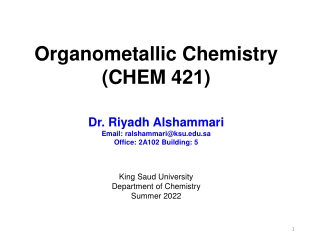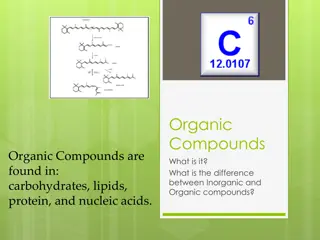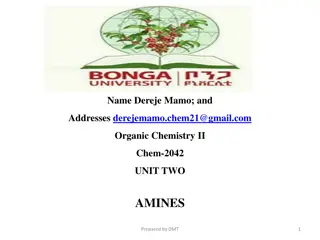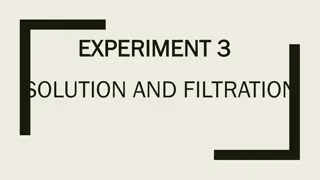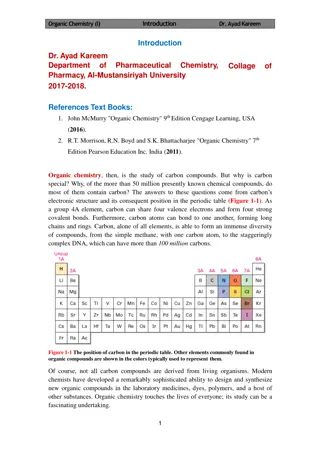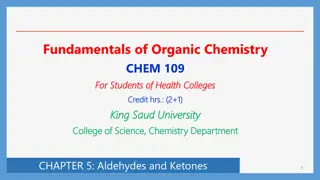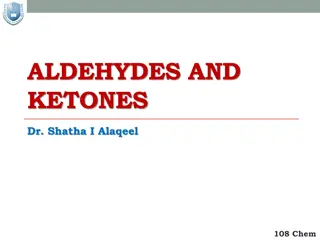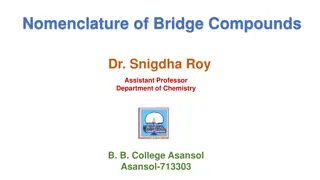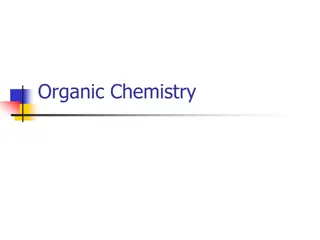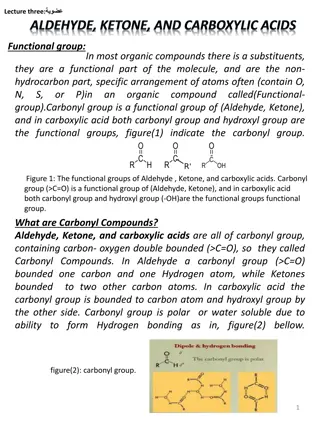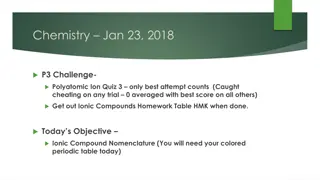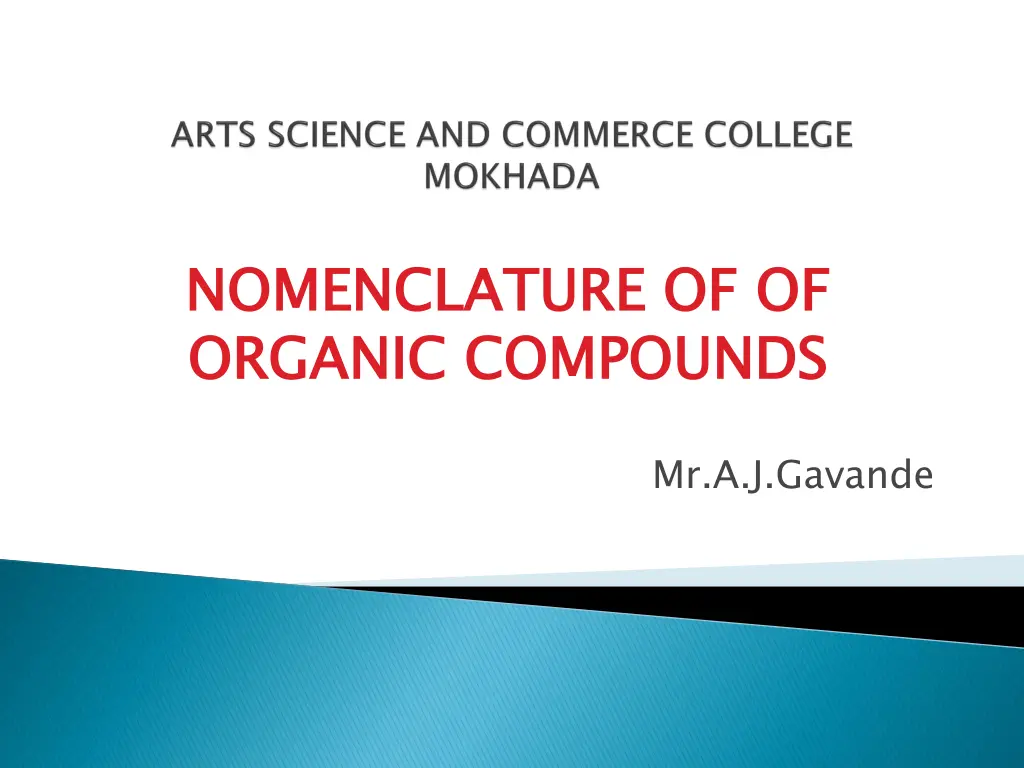
Organic Compound Nomenclature Guide
Learn about the nomenclature of organic compounds, including the IUPAC system for naming, rules for naming alkanes and cycloalkanes, steps to follow for naming compounds, functional groups, suffixes, and substituent prefixes. Understand how to establish an international standard for naming organic compounds and facilitate effective communication in the field of organic chemistry.
Download Presentation

Please find below an Image/Link to download the presentation.
The content on the website is provided AS IS for your information and personal use only. It may not be sold, licensed, or shared on other websites without obtaining consent from the author. If you encounter any issues during the download, it is possible that the publisher has removed the file from their server.
You are allowed to download the files provided on this website for personal or commercial use, subject to the condition that they are used lawfully. All files are the property of their respective owners.
The content on the website is provided AS IS for your information and personal use only. It may not be sold, licensed, or shared on other websites without obtaining consent from the author.
E N D
Presentation Transcript
NOMENCLATURE OF OF ORGANIC COMPOUNDS NOMENCLATURE OF OF ORGANIC COMPOUNDS Mr.A.J.Gavande
The nomenclature is to establish an international standard of naming compounds to facilitate communication. The goal of the system is to give unambiguous name, and to correlate each name structure. purpose of the IUPAC system of each structure a unique and with a unique and unambiguous
Alkanes and Cycloalkanes saturated hydrocarbons, that is, molecules containing carbon and hydrogen connected by single bonds only. The names of alkanes and cycloalkanes are the root names of organic compounds. Rings are designated by the prefix cyclo . are the family of
Step 1. Find the longest continuous carbon chain.Determine the root name for this parent chain. When there are two longest chains of equal length, use the chain with the greater number of substituents. Step 2.Number the chain in the direction such that the position number of the first substituent is the smaller number. If the first substituents from either end have the same number, then number so that the second substituent has the smaller number, etc. Step 3.Determine the name and position number of each substituent. Step 4. Indicate the number of identical groups by the prefixes di, tri, tetra, etc. Step 5. Place the position numbers and names of the substituent groups, in alphabetical order, before the root name.
Functional Functional Groups Indicated By Prefix Or Suffix Groups Indicated By Prefix Or Suffix Family Family Structure Prefix Structure Prefix Suffix Suffix Carboxylic Acid RCOOH carboxy- oic acid Aldehyde RCHO oxo- al Ketone RCOR oxo one Alcohol ROH hydroxy ol
Functional Group Suffix Alkane -ane Alkene -ene Alkyne -yne
Substituent Structure Prefix Alkyl Alkoxy Halogen - - - R R O F Cl Br I alkyl alkoxy- fluoro- chloro- bromo- iodo-

